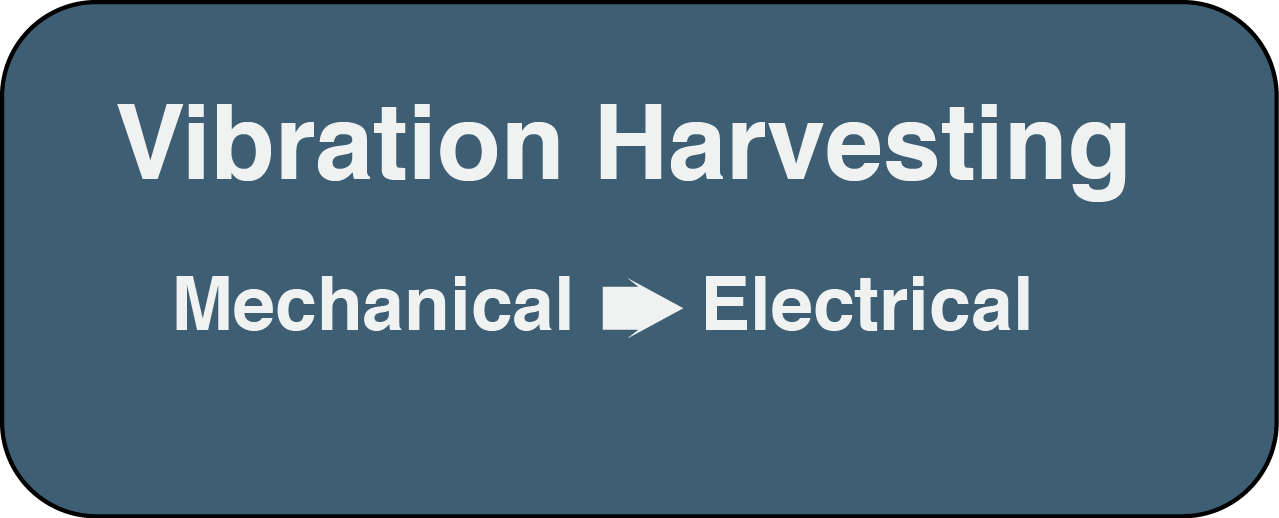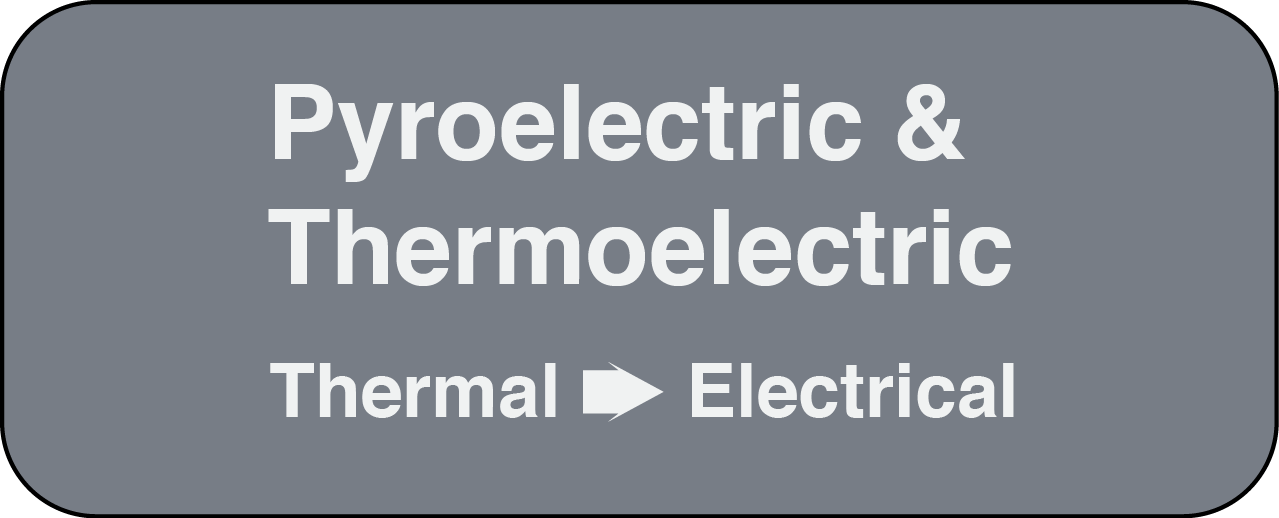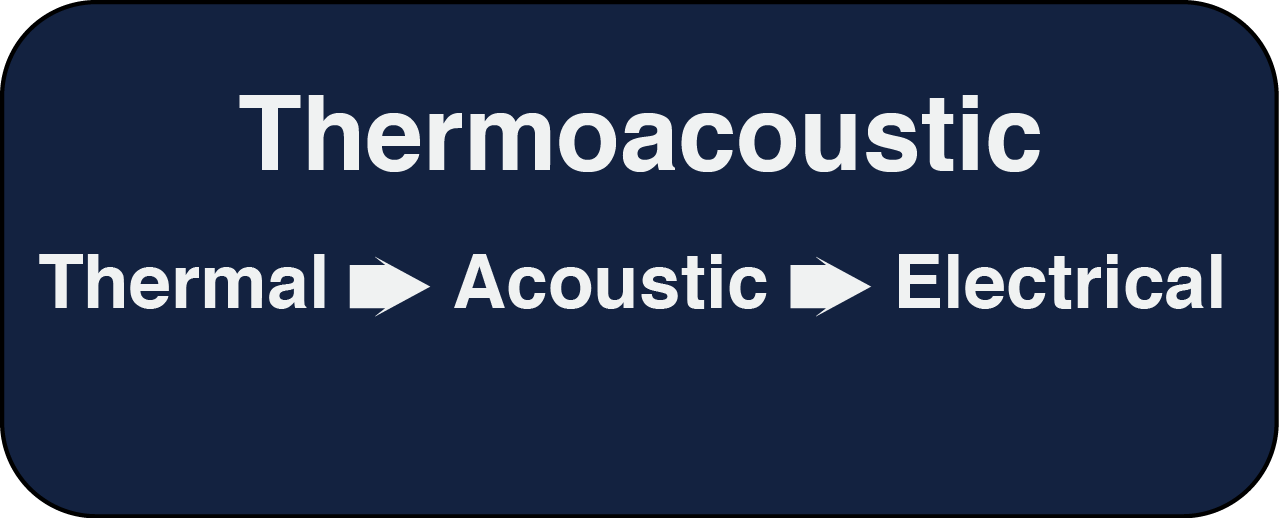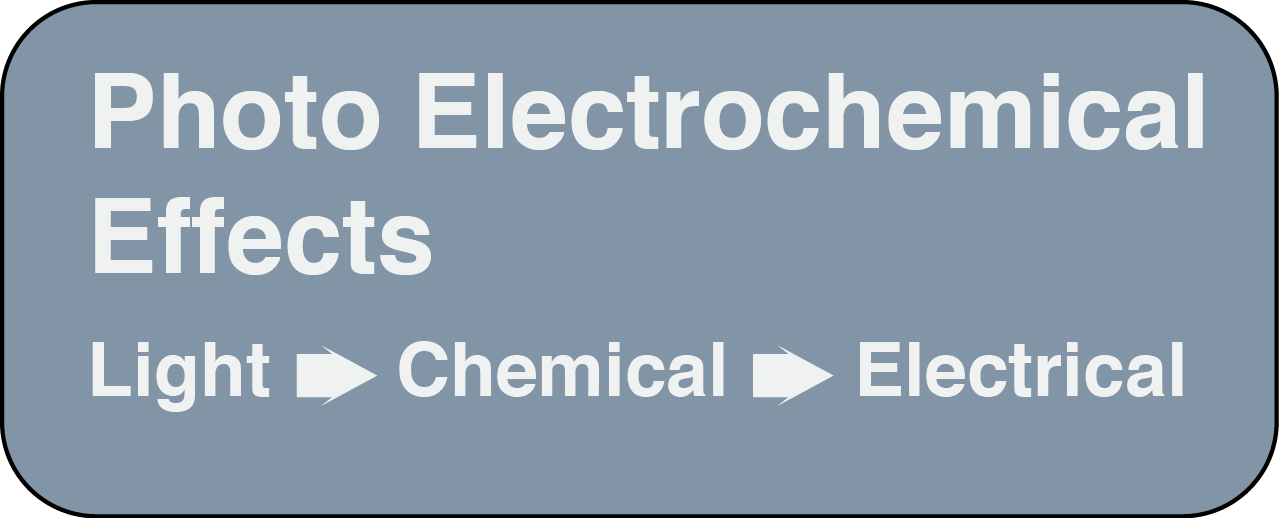|
 |

|
Mechanical to electrical energy
The use of non-linear elastic systems is a potential approach to realize more broadband piezoelectric based energy harvesting systems. We are examining a range of non-linear harvesters to achieve this, including the use of bistability in the form of cantilevers and plates. Applications include the conversion of mechanical vibration into electricity to power wireless sensor nodes.
|

|
Thermal to electrical energy
In an effort to harvest thermal energy and exploit abundantly available waste heat the pyroelectric effect offers the opportunity to convert temperature fluctuations into useable electrical energy. Here, the micropatterning of the surface of a pyroelectric in order to enhance heat transfer and achieve faster and larger temperature fluctuations, which improve pyroelectric energy transformation, is reported. Methods for the fabrication of partially covered electrodes on polyvinylidene difluoride (PVDF) films are developed to investigate and quantify the benefits of such an electrode structure for pyroelectric energy harvesting.
|

|
Thermoacoustic phenomenon
Thermoacoustic devices are capable of energy recovery and heat transfer using only pressure waves in inert and noble gasses; having no moving parts and requiring virtually no maintenance, this emerging technology offers significant potential across a wide range of applications. Harvesting waste thermal energy to produce electrical energy from the high amplitude acoustic waves produced by these devices is a key focus for this research. Self powered sensors, heat pumps, air-conditioning and emergency cooling, all offer opportunities for the exploitation of the thermoacoustic phenomenon.
|

|
Photo electrochemical effects
The photo-electro-chemical (PEC) splitting of water requires semiconductors with minimum energy gap of 1.23 eV and with conduction and valence bands overlapping the oxidation of H2O and the reduction of H+ respectively. Titania (TiO2) has been extensively investigated as photo-anode for PEC water splitting due to its suitable band-edge position, chemical resistance, environmental suitability and low cost. The main limitations of stoichiometric TiO2 are its wide band gap (3.2 eV) and electron-hole recombination. To increase the efficiency we can increase the surface area, use composites structures (i.e. thin films on ferroelectrics) to enhance electron-hole separation and introduce oxygen vacancies that increase the carriers' density. GaN is also a promising material for water-splitting since the band gap can be narrowed by adding In. Core/shell InGaN/GaN nanowires structrures are also been investigated. Solar cell application of ferroelectric materials are also being investigated including the origin of the large permittivity in these materials.
|
| |
|

